Contrast and Conquer
Did you ever wonder why some interiors look fabulous and others simply look ... flat?
It's not enough to have a great collection of furniture in a room. It's also important to have a variety of textures — to contrast flat finishes with rough ones and reflective ones with matte ones. This diversity gives the interior greater depth and visual interest, because the eye doesn't "read" everything on the same plane.
Vary the reflectivity of objects, too. If a room is full of rough textures and organic finishes, throw in a mirror, a piece of mercury glass or a clear glass table top. If the decor is sleek and pristine, mix in some hand-crafted artifacts or natural finishes.
By adding a little variety to the mix, you'll end up with a space that feels richer, and like it's been put together over time.
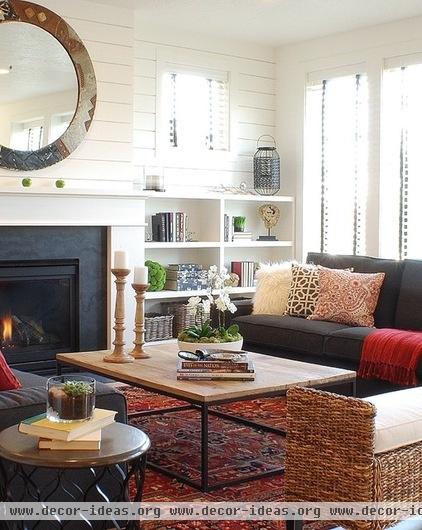
Texture can come from furnishings or from the room's surfaces. Imagine how much less interesting this room would have been with flat plasterboard walls. The painted horizontal paneling and toothy wicker bench add variety and depth.
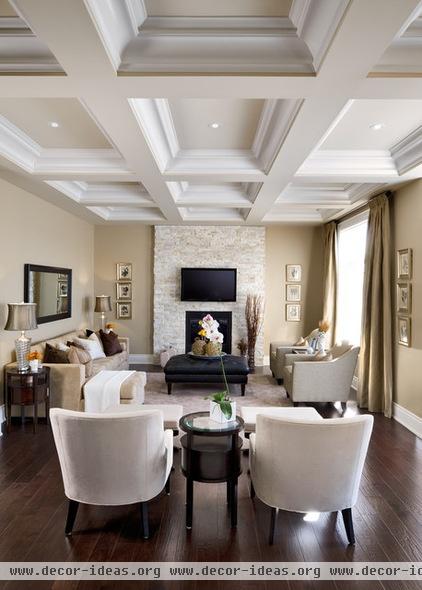
This elaborate coffered ceiling adds texture and pattern to what is otherwise a fairly neutral interior. The masonry fireplace may be simple and geometric, but its rugged texture adds a welcome contrast.
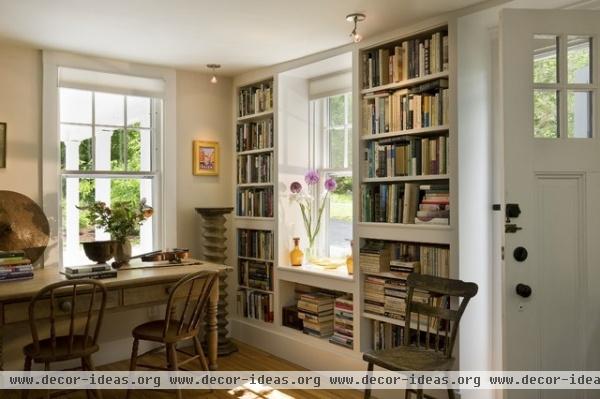
While books are designed to be read, they're also a good way to add texture, as in this home. Notice how some were arranged vertically and others were set on their sides, adding pattern within the bookcase.
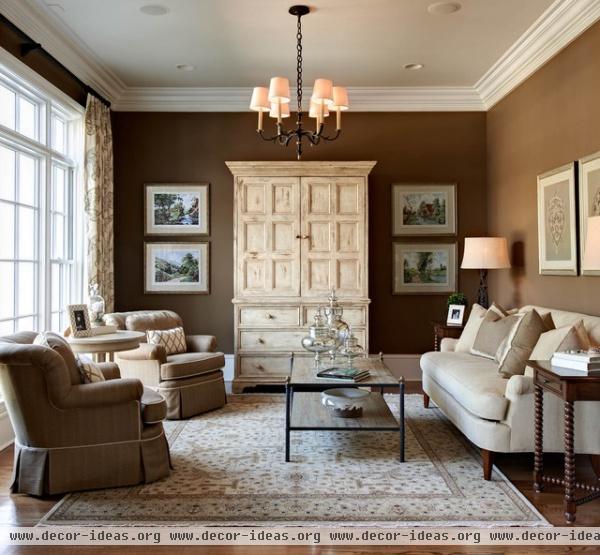
A mix of textures is especially important if you're working with a solid, monochromatic color palette. A rustic armoire adds a welcome touch of texture in this room.
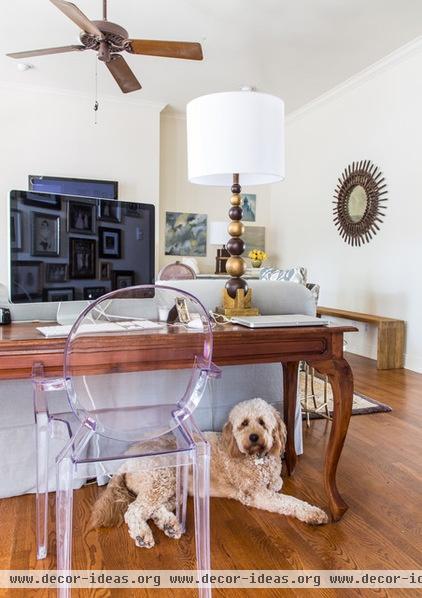
This Lucite chair would have disappeared if it had been paired with a glass table. But the contrast with this transitional wood console makes both pieces stand out more and creates a nice tension between the two.
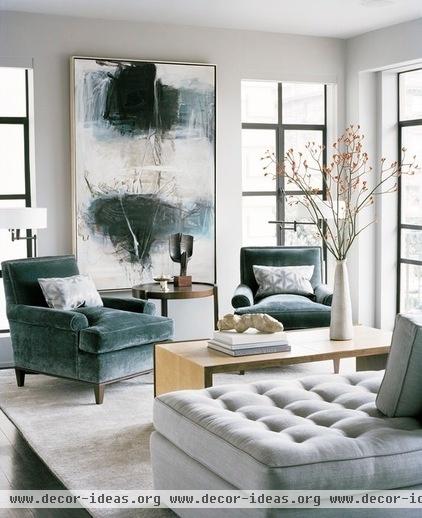
You don't have to have especially textured fabrics to achieve the appearance of texture. Here the tufted sofa creates a play of light and shadow that gives the illusion of extra texture. The painting on the wall adds visual variety, too.
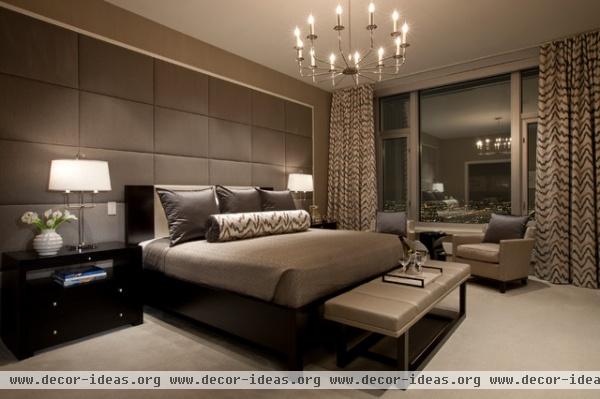
In this instance the upholstery isn't tufted — the wall is! The treatment adds variety to a monochromatic interior without sacrificing the tranquil feeling.
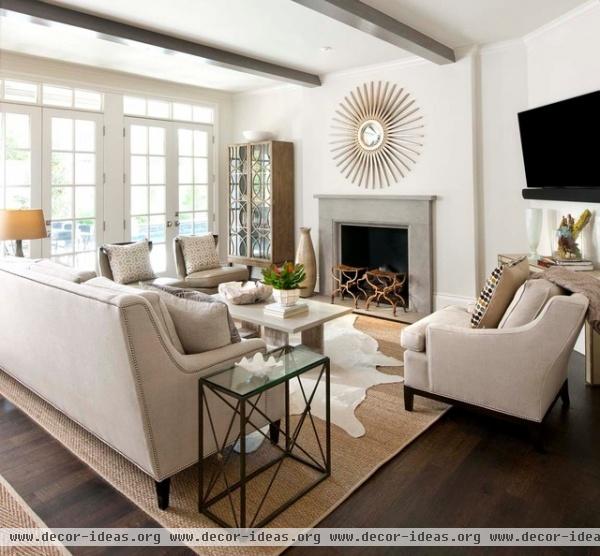
When choosing upholstered pieces, avoid fabrics that are all the same texture. If you prefer a unified look, match the fabric colors but choose different weaves or fibers. You can also introduce contrasting texture with pillows, throws or carpets — even layering one carpet on another.
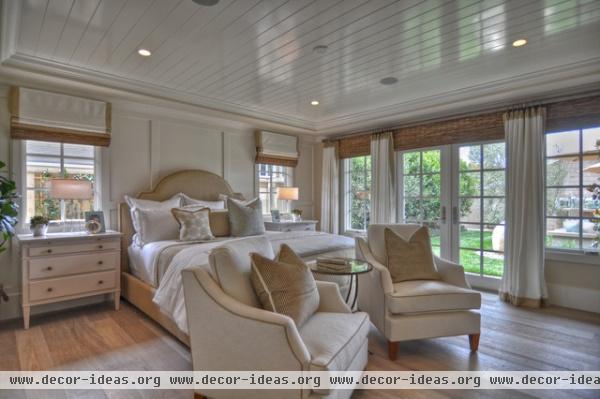
While floors are a great place to introduce texture, don't overlook the ceiling. This bedroom's high-gloss tongue and groove ceiling contrasts nicely with the matte, organic-looking fabrics beneath it.
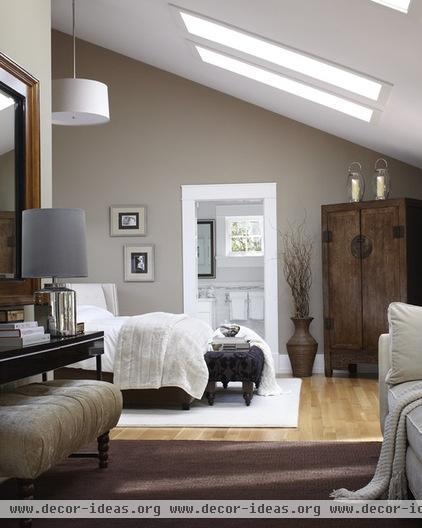
Something as simple as a vase of corkscrew willow can add needed texture.
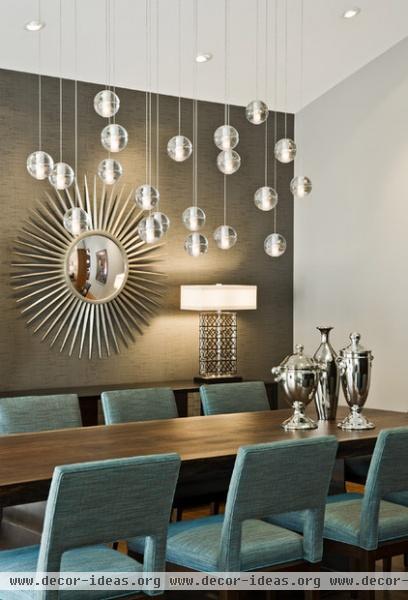
The forms are contemporary, but the surfaces are varied, giving this dining room extra interest. Note how toothy, organic finishes are paired with shiny silver and glass accessories to vary the sheen as well as the texture.
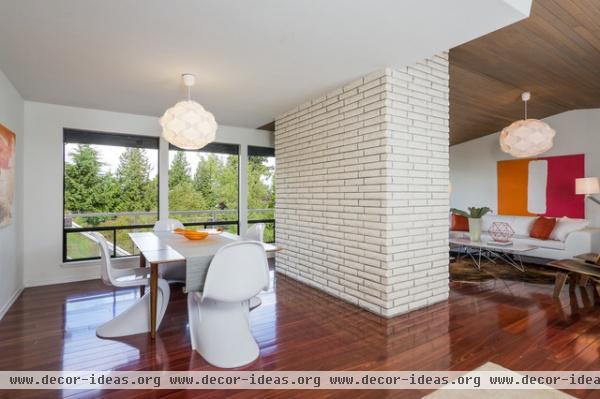
By their very nature, contemporary interiors are designed to be homogenous. But too much similarity can come across as flat and dull. In this instance the painted brick fireplace, honeycomb pendant lights and variegated wood ceiling add texture and pattern without compromising the contemporary aesthetic.












